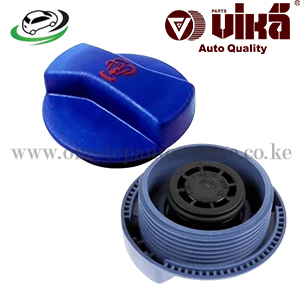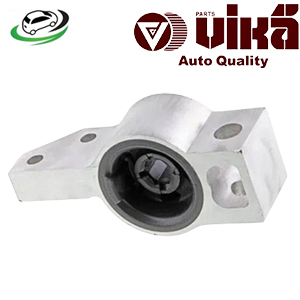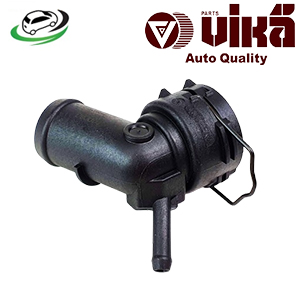-28%
Get Radiator Coolant Hose Adapter VW Golf VII/Golf VII Facelift/Golf VII R/Golf VII SportWagen Facelift/Tiguan MQB 1K0122291BE
A radiator coolant hose adapter is a small but vital component in a vehicle’s cooling system. It facilitates the proper connection of hoses to the radiator, ensuring efficient coolant flow and optimal engine temperature. Here’s an in-depth look at the function, types, common issues, maintenance, and replacement of the radiator coolant hose adapter.
Function of the Radiator Coolant Hose Adapter
The primary role of the radiator coolant hose adapter is to ensure a secure and leak-free connection between the radiator hoses and the radiator or other cooling system components. Its functions include:
- Connecting Hoses: The adapter connects different sections of the cooling system, such as the radiator, water pump, heater core, and engine block.
- Maintaining Coolant Flow: It helps direct the flow of coolant through the system, ensuring that it circulates efficiently and maintains optimal engine temperature.
- Preventing Leaks: By providing a tight seal, the adapter prevents coolant leaks, which can lead to overheating and engine damage.
- Adapting Hose Sizes: Some adapters allow hoses of different sizes to be connected, accommodating variations in hose diameters within the cooling system.
Types of Radiator Coolant Hose Adapters
Radiator coolant hose adapters come in various designs and materials to meet different needs and specifications:
- Straight Adapters: These adapters provide a direct connection between two hoses of the same diameter.
- Reducer Adapters: Used to connect hoses of different diameters, reducing the size from one end to the other.
- Elbow Adapters: These adapters change the direction of the hose connection, typically at a 90-degree angle, to fit the layout of the cooling system.
- Tee Adapters: These allow the connection of three hoses, enabling a branching flow of coolant.
- Quick-Connect Adapters: Designed for easy and quick connection and disconnection, often used in modern vehicles for convenience.
Materials Used in Radiator Coolant Hose Adapters
The choice of material for radiator coolant hose adapters is crucial for their durability and performance. Common materials include:
- Plastic: Lightweight and cost-effective, plastic adapters are commonly used but can be prone to cracking over time due to heat and pressure.
- Metal: Metal adapters, such as those made from aluminum or brass, offer superior durability and resistance to high temperatures and pressures.
- Silicone: Some adapters are made from silicone, offering flexibility and resistance to heat and chemical degradation.
Importance of the Radiator Coolant Hose Adapter
The radiator coolant hose adapter plays a critical role in the overall performance and reliability of the cooling system:
- Ensures Proper Coolant Flow: By securely connecting hoses, the adapter ensures that coolant flows efficiently through the system, preventing overheating.
- Prevents Leaks: A well-fitted adapter prevents coolant leaks, which can lead to low coolant levels and potential engine damage.
- Accommodates System Design: Adapters allow for flexible hose routing, accommodating the design constraints of the engine bay and cooling system layout.
- Facilitates Maintenance: Quick-connect adapters make it easier to perform maintenance and repairs on the cooling system, reducing downtime.
Common Issues with Radiator Coolant Hose Adapters
Over time, radiator coolant hose adapters can develop issues that affect their performance:
- Cracking and Splitting: Exposure to high temperatures and pressure can cause plastic adapters to crack or split, leading to leaks.
- Corrosion: Metal adapters can corrode over time, especially if the coolant is not properly maintained or if the system is exposed to moisture.
- Wear and Tear: Continuous exposure to coolant flow, temperature fluctuations, and engine vibrations can cause wear and tear on the adapter, leading to potential failure.
- Improper Fit: Incorrectly sized or poorly fitted adapters can cause leaks and inefficient coolant flow, leading to overheating.
Signs of a Failing Radiator Coolant Hose Adapter
Identifying the signs of a failing radiator coolant hose adapter can help prevent more severe cooling system issues:
- Coolant Leaks: Visible coolant leaks around the adapter connections or under the vehicle.
- Overheating: Frequent engine overheating or fluctuating temperatures can indicate a problem with the coolant flow, possibly due to a failing adapter.
- Low Coolant Levels: Frequently needing to top off the coolant can be a sign of a leak from a faulty adapter.
- Visible Damage: Cracks, corrosion, or wear on the adapter itself can indicate that it needs replacement.
Maintenance and Prevention
Regular maintenance can help ensure the longevity and effectiveness of the radiator coolant hose adapter:
- Regular Inspections: Check the adapter and hose connections during routine maintenance for signs of wear, leaks, or damage.
- Coolant Quality: Use high-quality coolant and maintain proper coolant levels to reduce the risk of corrosion and chemical degradation of the adapter.
- Proper Installation: Ensure that the adapter is correctly fitted and the hoses are securely connected to prevent leaks.
- Replace When Necessary: Replace the adapter at the first sign of damage or wear to prevent further issues in the cooling system.
Replacement of the Radiator Coolant Hose Adapter
Replacing a radiator coolant hose adapter is a relatively straightforward process, but it requires careful attention to detail:
- Preparation:
- Tools and Materials: Gather necessary tools, including wrenches, pliers, and replacement adapters.
- Safety Measures: Ensure the engine is cool before starting the replacement to prevent burns from hot coolant.
- Drain Coolant:
- Drain Pan: Place a drain pan under the radiator and open the drain valve to drain the coolant.
- Remove Old Adapter:
- Disconnect Hoses: Use pliers or a screwdriver to loosen the hose clamps and disconnect the hoses from the adapter.
- Remove Adapter: Carefully remove the old adapter from the cooling system.
- Install New Adapter:
- Fit Adapter: Install the new adapter, ensuring it fits securely and aligns correctly with the hoses.
- Reconnect Hoses: Reattach the hoses to the adapter and tighten the hose clamps securely.
- Refill Coolant:
- Coolant: Refill the cooling system with the appropriate type and amount of coolant.
- Bleed System: Bleed the cooling system to remove any air pockets that could affect coolant flow.
- Test Drive:
- Performance Check: Start the engine and let it run for a few minutes. Monitor the temperature gauge and check for any leaks or unusual noises.
- Test Drive: Take the vehicle for a short test drive to ensure the cooling system is operating smoothly and there are no leaks.
Follow us on Facebook for more parts.



